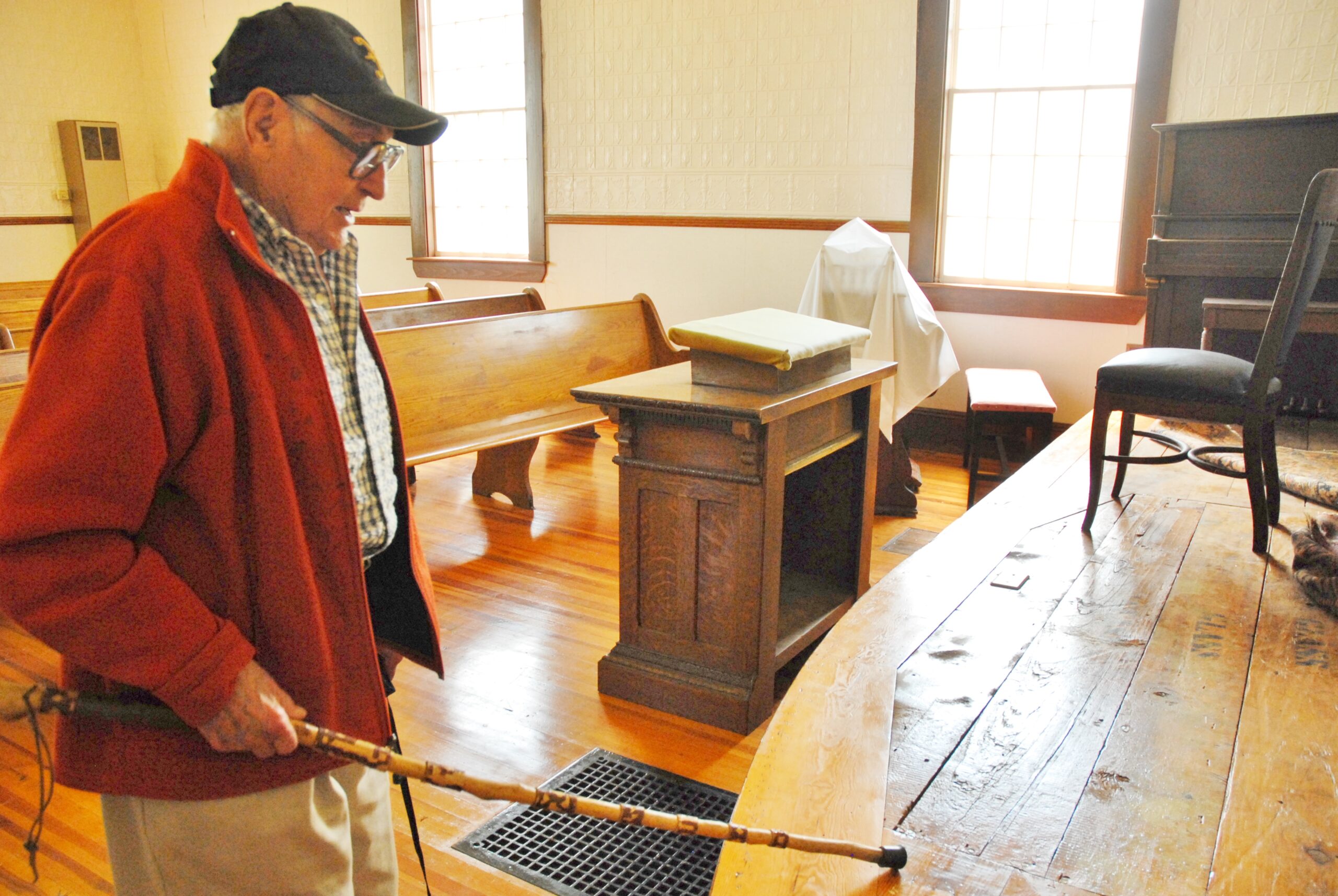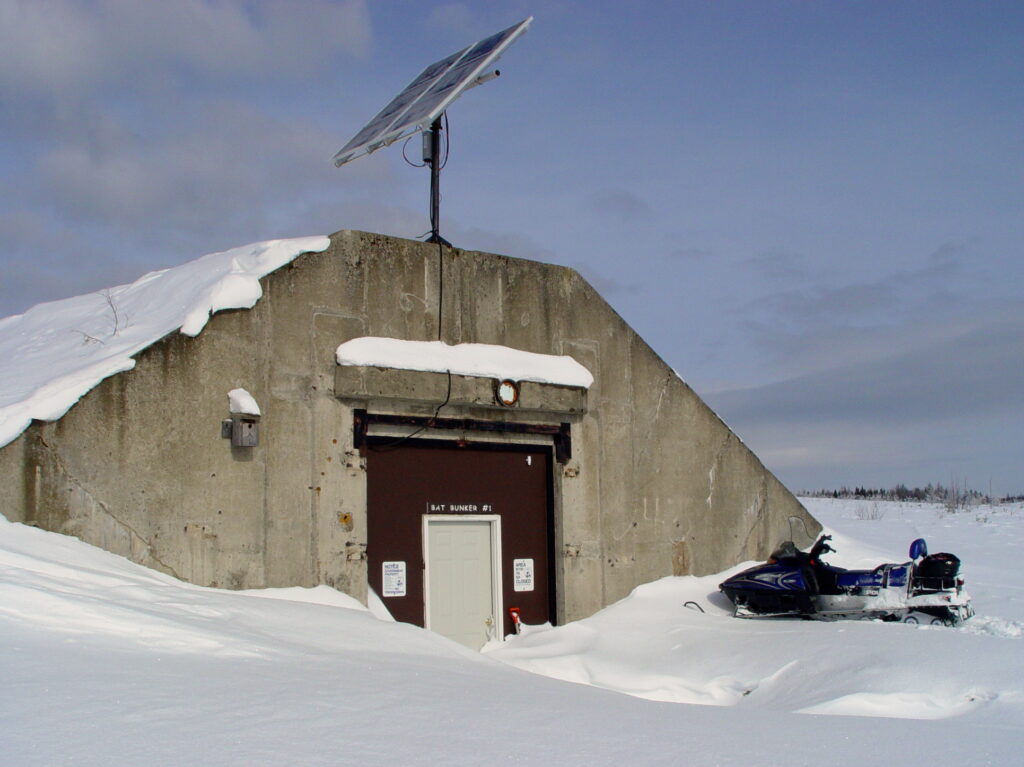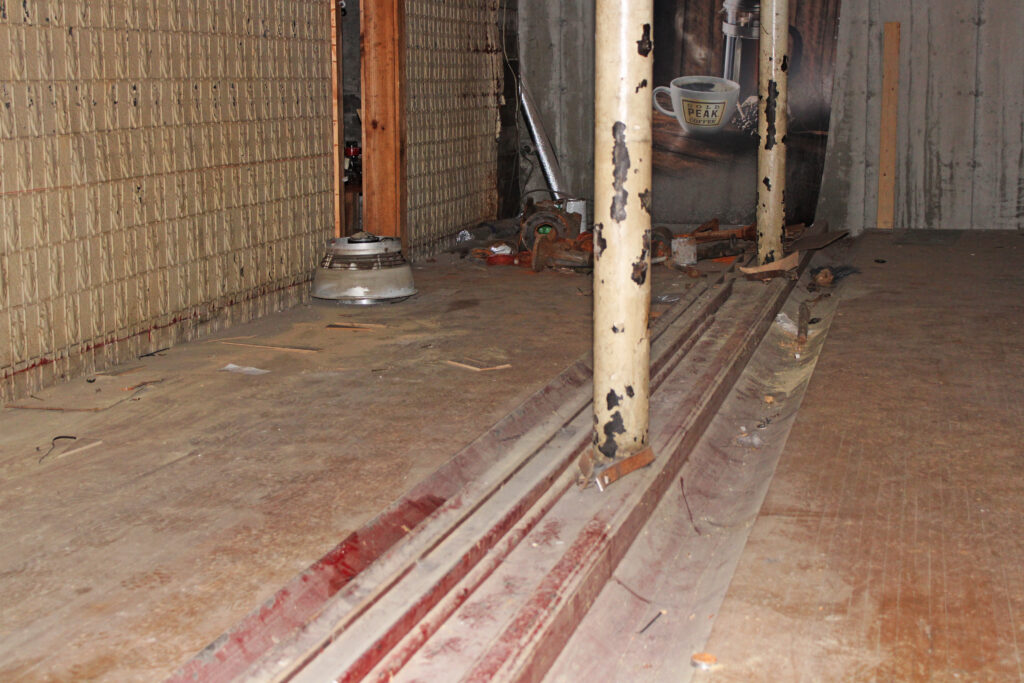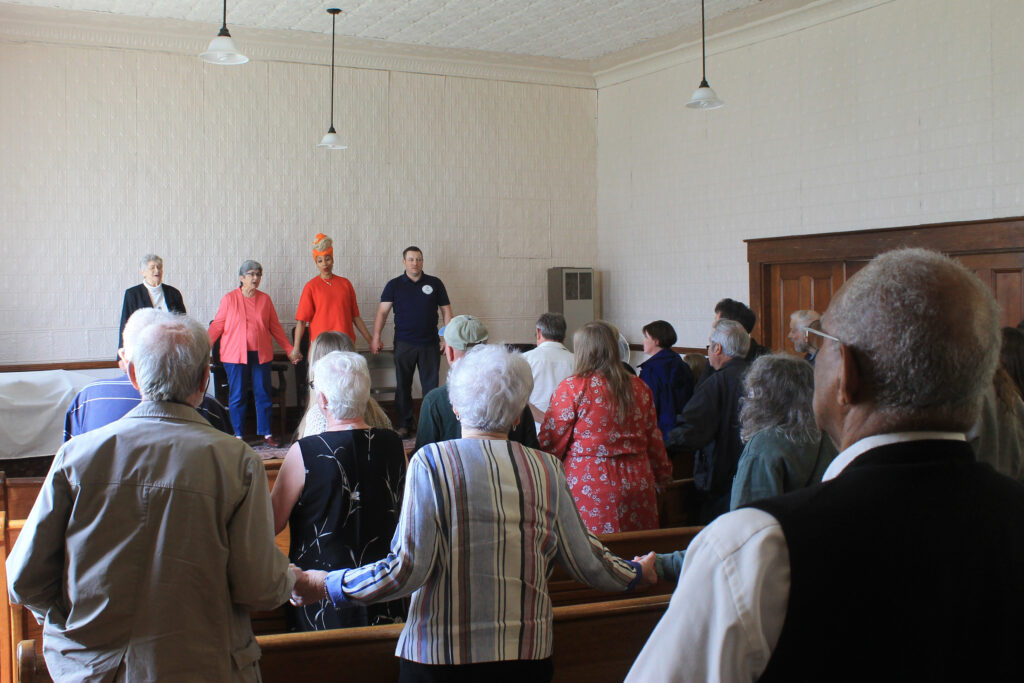
Aroostook County’s stunning landscapes and friendly people are no secret. But what’s below the earth — or used to be — is another story entirely.
Northern Maine has a lot of above-ground history and lore, from the ghost trains of the Allagash to barns fallen into ruin. Underground things inspire intrigue that makes us want to dig deeper and find out more. Things can go bust — like when Geraldo Rivera opened Al Capone’s vault under a Chicago hotel and found nothing. But for most Mainers, a good story is enough reward.
Here are six stories about things under the surface of the County. Passage for people escaping from slavery, a bowling alley below a street and a 200-mile conduit to the coast are among the underground curiosities.
Hidden military caches
The former Loring Air Force Base once stored nuclear and non-nuclear components in underground bunkers.

Caribou native Tom Burby talked about the subterranean storage on his podcase “The Bunkers at the End of the World.”
“Inside this strange and haunting set of structures half buried in the earth, the United States stored enough nuclear warheads to destroy the earth several times over,” Burby wrote.
The U.S. Fish and Wildlife Service bought 43 bunkers and 4,700 acres of the former base in 1998 and created the Aroostook National Wildlife Refuge.
Some of the bunkers still exist, but with happier purposes. Wildlife service staff used them in 2013 as hibernation sites to give endangered little brown bats with white nose syndrome respite from infected caves.
That study is over, but some bunkers are still available for bats, said John Magera, refuge manager. Others are used for storage by refuge partners like the Maine Forest Service and National Guard.
A men’s club gaming haven
Presque Isle businessmen founded the Mooseleuk Club in 1900. Their headquarters at 483 Main Street had a dining room, pool room, fireplace and a basement bowling alley.
The pins were situated below the sidewalk, said Kim Smith of the Presque Isle Historical Society.

“Everything was done by hand then, of course. There were no setup machines,” Smith said. “The guys who reset the pins laid on their stomachs right underneath Main Street.”
The area that once extended under the sidewalk and street was filled in decades ago, she said.
Marston’s, Star City Coffee and Cafe Demoiselles once occupied the building, which now houses Full Bloom Cannabis. The basement hasn’t been touched much, Full Bloom staff said.
The BDN was allowed in for a look. Vintage tin covers most of the ceiling and walls. Two former alleys form the solid hardwood floor, with a cement wall on the Main Street side. Between the alleys is the wood and metal bowling ball carrier that extends about three-quarters of the space’s length, a reflection of the room’s past.
A sinkhole and a tavern
A one-time Houlton sinkhole could be connected to the town’s oldest building.
Civil War veteran and former sheriff Blackhawk Putnam ran the Blackhawk Putnam Tavern at the Aaron Putnam homestead, built in 1813. The site also served as northern Maine’s first courthouse and once held a jail.
Houlton’s Sherwin Williams store is behind that building. In 2015, then-manager Al Hanscom arrived at the store to see a two-foot-wide hole in the parking lot that went down some 30 feet. The cavern had apparently opened up during the night.
Hanscom said the hole seemed to curve toward the former tavern and looked to contain some old pipes in its depths. He wondered if the cavern was once part of an underground tunnel system for the jail. The question remains unanswered.
The Putnam building now houses A New Start, a mental health and case management agency.
Fuel from the coast
When Loring was a working air base, its airport received jet fuel via a 200-mile underground pipeline to Searsport.
The Department of Defense built the pipeline in the 1950s. Fuel was pumped north through a 6-inch pipe. Loring closed in 1994 and the Loring Development Authority took over the former base.
Bangor Gas has leased the conduit since 2012 and reactivated some parts of it for natural gas delivery, according to the development authority’s 2023 annual report.
The pipeline could get another life if a sustainable jet fuel venture goes forward. Louisiana-based DG Fuels proposed plans in 2022 to build a $4.4 billion fuel plant at Loring, which would use railroads and the pipeline to deliver its product along the East Coast.
A slavery escape route
A historic Fort Fairfield church once served a secret purpose.
Fort Fairfield’s first Quaker, Joseph Haines, built the Maple Grove Friends Church in 1859. The building was part of the Underground Railroad’s escape route and hid those escaping from slavery before they crossed into Canada.

Enslaved people were hidden under the floors of sites like the church, according to oral history. Workers renovating the structure discovered a hole that had been prepared, people learned at a 2018 celebration to honor the church’s history. Escapees of slavery may have followed trails from the site into New Brunswick.
The Fort Fairfield Heritage Historical Society now owns the building, which appears on the National Register of Historic Places as one of many Maine sites believed to be part of the Underground Railroad.
If an old air base could talk
There might be a stash of military vehicles under portions of the Presque Isle Industrial Park, which the city formed when the air base closed in 1961.
Military officials didn’t bother shipping some things out at the time of closure, but buried them instead, said Smith, who also serves on the Presque Isle Air Museum board.
“They apparently dug a trench close to where the middle school is and buried bunches of jeeps. Some were still in the crates,” Smith said. “We also understand they did that on the south side of the base.”
The board contacted Chunzeng Wang, professor of earth and environmental studies at the University of Maine at Presque Isle, who deployed ground-penetrating radar equipment to no avail. The Air Museum will continue to investigate, Smith said.
Those with an eye for history might unearth more of The County’s secrets. Next time you’re exploring in northern Maine, pay close attention — you never know what might be underfoot.




